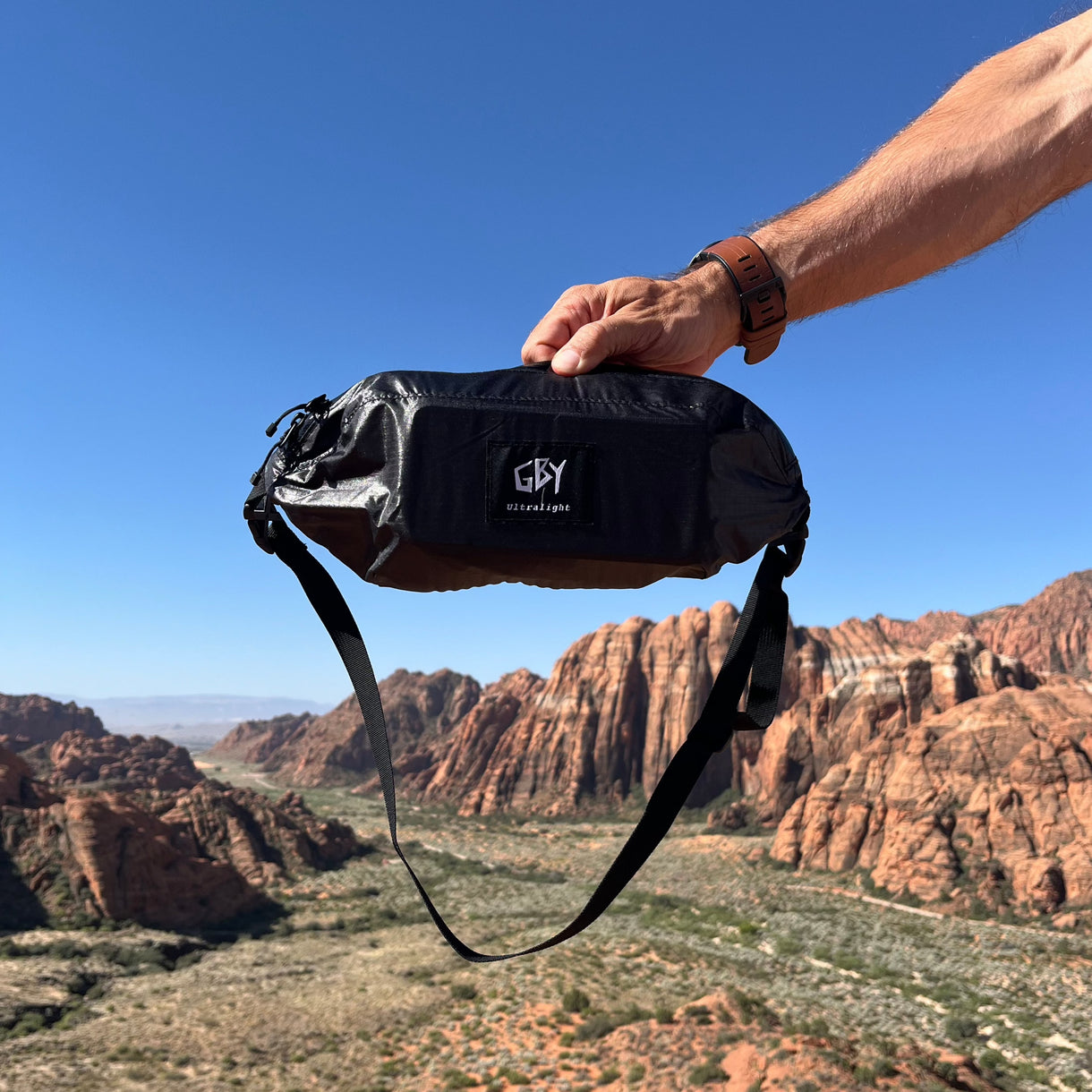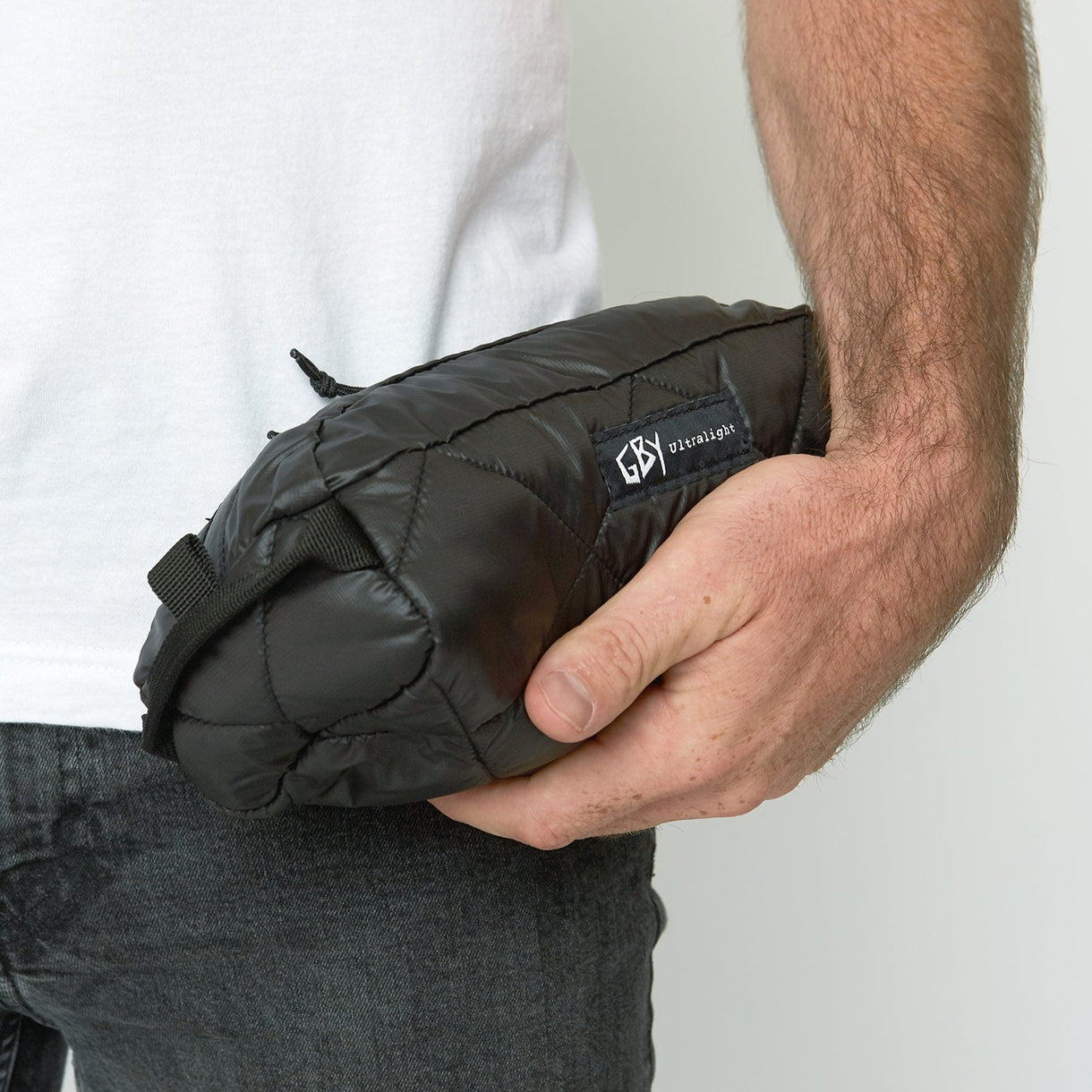Introduction: Why Materials Define Longevity
You might think the “pouch” is just a minor accessory. But for anyone commuting, adventuring, or working remotely, a durable ultralight utility pouch is a frontline protector of your small accessories—chargers, cables, pens, tools. The materials you choose determine whether it wears out in months or becomes a trustable companion for years. In this article, we’ll break down which fabrics and construction techniques matter most, give you criteria you can test, and show how GBY Ultra’s utility pouch implements many of these lessons.

What Makes a Utility Pouch Truly Durable? (H2)
Before naming materials, we first need to understand what durability means in the ultralight world. A good pouch resists:
-
Tears & punctures when pressed by keys, tools, or hardware
-
Abrasion from rubbing against other gear or rough surfaces
-
Seam failure where panels join
-
Zipper wear under repeated use
-
Coating degradation (for waterproof or water-resistant finishes)
In practice, the strongest pouch is the one whose materials and construction manage all these stressors simultaneously without blowing past your weight budget.
Top Materials for Durable Ultralight Utility Pouches (H2)

Here are commonly used fabrics or composites you’ll encounter—and how they perform in real carry scenarios.
H3: Ripstop Nylon / High-Tenacity Nylon
Pros
-
Familiar, forgiving, easy to sew and repair
-
Good baseline tensile and tear strength when using higher-tenacity threads
-
Amenable to coatings (DWR, PU) for water protection
Cons
-
Without reinforcement, edges or seam folds may wear first
-
Coatings wear off over time—maintenance needed
Many utility pouches start with ripstop nylon and reinforce problem areas (corners, zipper ends) for longevity.
H3: Quilted/Soft-Quilted Ripstop
Pros
-
Adds cushioning for fragile items without heavy foam
-
Spreads load more evenly, reducing local stress points
Cons
-
Slight weight premium
-
Stitching must be high-quality or risk weak spots
GBY Ultra’s Ultralight Utility Pouch uses QD-Ultra quilted micro-ripstop Japanese nylon to combine light weight, padding, and durability. GBY Ultralight+1
H3: Laminated Fabrics / Composite Hybrids (X-Pac, Dyneema Composite, etc.)
Pros
-
Excellent water resistance (often inherently waterproof)
-
Tight structure, excellent tear resistance
-
Very low stretch
Cons
-
Usually stiffer, less forgiving
-
Delamination risk if adhesives degrade
-
Repair is more complicated
These are often top-tier choices when you demand a pouch that will see rugged use.
H3: UHMWPE / Ultra / Hybrid Fabrics
Pros
-
Strong, abrasion-resistant, and low weight
-
Better fatigue in certain uses than pure laminates
-
Good balance between strength and flexibility
Cons
-
Cost and complexity in manufacturing
-
May require reinforcing overlays at stress points
These fabrics often form the “premium tier” in ultralight pouches—used when longevity justifies cost.
H3: Coated Fabrics (PU, Silicone, etc.)
Pros
-
Adds water-resistance to otherwise less weatherproof fabrics
-
Can be lighter than full laminate solutions
Cons
-
Coatings may crack, peel, or degrade with folding and UV exposure
-
Need periodic reapplication
In many everyday-leaning pouches, coatings are used judiciously on faces or flaps rather than full coverage.
Construction & Design Details That Amplify Durability (H2)
A superior material can be undermined by poor stitching or design. Here’s what to look for:
-
Reinforced stitching or bartacks at stress points (corners of pockets, zipper ends)
-
Bias binding or seam tape on raw edges to prevent fraying
-
Zipper quality: water-resistant or branded zippers (e.g. YKK)
-
Panel overlap & load distribution so seams don’t ride where gear pushes
-
Internal sleeves or buffers so sharp items don’t rub against shell
These techniques, combined with a strong fabric, often determine how long a pouch lasts in real life.
How GBY Ultra’s Pouch Implements These Principles (H2)

GBY Ultra’s Ultralight Utility Pouch offers a real-world example of how material + design merge well:
-
It’s crafted from QD-Ultra quilted micro-ripstop Japanese nylon, giving soft internal cushioning and durable shell protection. GBY Ultralight+1
-
It weighs just 2.2 oz (61g), showing how careful design holds performance into ultralight territory. GBY Ultralight
-
It includes YKK water-resistant zippers, which help seal out moisture in everyday environments. GBY Ultralight+1
-
End hoops and pull tabs offer better handling and durability, preventing over-stress on fabric around zipper ends. GBY Ultralight
By marrying thoughtful materials with construction detail, the pouch lives up to its name.
Choosing a Durable Ultralight Utility Pouch: Tips & Trade-Offs (H2)
When selecting a pouch for your life and carry style, consider the following:
-
Match fabric to risk exposure
If your pouch will live in city use, moderate use of ripstop + coating may suffice. In harsher conditions, lean into laminate or composite builds. -
Prioritize critical zones
Reinforce the “wear edges”—zipper edges, corners, fold lines—rather than overbuilding everywhere. -
Evaluate weight vs durability trade-off
Sometimes adding a few grams on material that lives longer is better than a lighter pouch that wears out quickly. -
Inspect stitching & hardware
A weak zipper or sloppy seam undermines great fabric. Always check those first. -
Maintain your pouch
-
Clean grit and debris that abrade fabric.
-
Reapply DWR or coatings when water stops beading.
-
Patch early small abrasions before they expand.
-
-
Use internal buffers or sleeves
Sharp implements—keys, tools—should not directly rub shell fabric. Use internal liners to protect.
Key Takeaways
-
A durable ultralight utility pouch depends as much on construction and detail as on material choice.
-
Quilted ripstop, laminated hybrids, composites, and coated fabrics all have roles—with different trade-offs.
-
Reinforcement in edges, zippers, seams often defines longevity more than fabric alone.
-
Use the GBY Ultra pouch as a benchmark: consciously materialled, lightweight, and built with solid design.
-
Match your pouch to your daily wear-and-tear environment, and maintain it regularly.
Ready to trust your everyday carry without compromise? Explore GBY Ultra’s Utility Bags collection, where durable materials, smart design, and ultralight philosophy converge.








